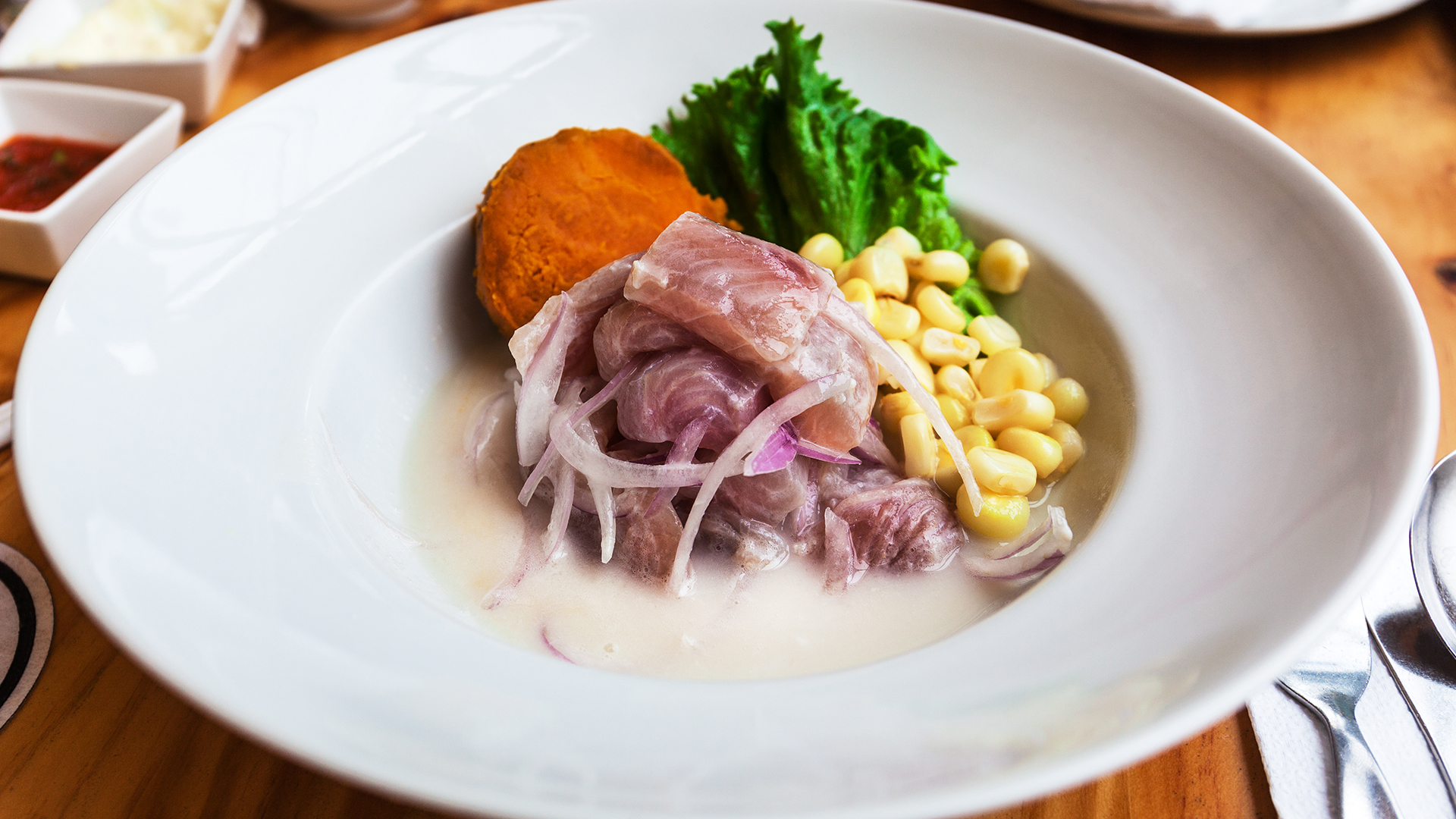Travel and tourism in culinary terms refer to the exploration of food and dining experiences linked to travel. This niche combines tourism with the enjoyment of unique and regional cuisine.
Exploring the flavors of the world has become an integral part of modern travel. Culinary tourism, a growing trend among food enthusiasts and travelers alike, invites you to discover new cultures through their kitchens. Delight in local dishes, learn culinary techniques and enjoy the ambiance of foreign eateries.
By engaging in this delicious journey, you contribute to the local economy, appreciate regional ingredients, and create memories through taste. This gastronomic adventure enhances the travel experience, making each destination’s cuisine a star attraction. Whether it’s savoring street food or dining at a Michelin-starred restaurant, culinary tourism serves up unforgettable moments for the palate and fosters a deeper understanding of global culinary diversity.

Credit: www.andbeyond.com
The Essence Of Culinary Tourism
Culinary Tourism, also known as food tourism, invites travelers into a tasty world. It takes them on a journey through local flavors, traditional recipes, and the unique tastes of a destination. As travelers seek authentic experiences, culinary tourism satisfies the desire to connect with a place through its food. It’s an adventure for the taste buds, revealing the history and culture of a region.
Defining Culinary Travel
Culinary Travel is the pursuit of memorable and authentic food experiences. It is about more than just eating. It is about the exploration of cuisine as an integral part of the cultural landscape. Food lovers venture to markets, restaurants, farms, and cooking classes to immerse themselves in the local culinary scene.
Why Food Defines A Destination
Food is the heart of a destination’s identity. Each dish tells a story of the land, climate, and people. Local ingredients and age-old techniques blend to create flavors that define a place. These culinary signatures become the memories that travelers carry with them long after their journey ends.
- Local Ingredients: Celebrate the produce that grows in the region.
- Traditional Techniques: Showcase the cooking methods passed down through generations.
- Authentic Flavors: Offer an insight into the community’s culture and heritage.
Culinary Tourism’s Rising Popularity
Food is not just sustenance; it’s a passport to the world’s cultures. As we explore new destinations, tasting the local cuisine is like a conversation with the place itself. Each dish tells a story, each flavor, a local secret and it is this delicious exploration that’s propelling culinary tourism. This branch of travel combines the love of eating with the adventure of traveling, taking foodies on a journey that tantalizes the taste buds and nourishes the soul. The trend of exploring exotic destinations through their culinary offerings has become a global sensation.
Growth Statistics In Food Tourism
The numbers speak loudly of an appetite for gastronomic experiences. Studies show that food tourism has grown remarkably. Here’s a quick look at the impressive numbers:
- Numerous travelers now choose destinations based on culinary offerings.
- Over 70% of tourists consider food experiences a vital part of their travel.
This enthusiasm for tasting and touring is a clear indicator of food tourism’s strong heartbeat.
Social Media’s Influence On Culinary Adventures
Food adventures are viral sensations, thanks to social media’s reach. Eager food lovers post and share their dining experiences, turning meals into a social event that transcends borders.
Platforms like Instagram and Facebook serve as ideal showcases for culinary discoveries. Visitors share vibrant images and videos of local dishes, cooking classes, and food market tours, sparking curiosity and inspiring others to embark on similar journeys.
- Hashtags and geotags connect travelers to new food destinations.
- Food influencers shape trends and highlight must-visit eateries and foods.
This digital word-of-mouth has become a major force in driving the food tourism industry forward.
Local Flavors As Cultural Ambassadors
The culinary world often acts as a gateway to understanding and appreciating a culture. Local flavors serve as cultural ambassadors, opening up paths to explore traditions, history, and the essence of a destination. As we delve into how travel and tourism are defined through a culinary lens, let’s taste the authenticity that food brings to our experiences.
Traditional Dishes Tell A Story
Each traditional dish holds a tale, imbued with the heritage of a place. From the ingredients selected to the methods of preparation, these recipes have been passed down through generations. They often reflect the geographic, economic, and historical aspects of the region they come from.
- Fresh seafood straight from the coast, seasoned with local herbs, speaks of the ocean’s influence on coastal communities.
- Hearty stews and baked goods often tell tales of colder climates and the need for nourishing foods to battle the harsh weather.
- Spices and herbs unique to an area can reveal historical trade routes and exchanges of culinary ideas.
Each bite is a step back in time, a chance to savor history on a plate.
The Role Of Street Food In Urban Exploration
Street food acts as a compass for uncovering the bustling life of urban areas. Easy to eat and packed with flavor, it introduces travelers to the daily rhythms and tastes of a city.
| City | Signature Street Food |
|---|---|
| Bangkok | Pad Thai |
| Mexico City | Tacos al Pastor |
| Marrakech | Tagine |
Each food stall tells its own story, offering more than just a quick snack. It provides insight into how locals live and what they crave.
- Explore vibrant marketplaces to see the raw ingredients that make up these street eats.
- Chat with local vendors to learn the personal and communal histories behind each dish.
- Notice the diversity of options, which often symbolizes the melting pot of cultures within a city.
Embracing the world of street food means diving headfirst into a cross-section of society, where all walks of life converge for the love of food.
Experiential Dining And Immersive Experiences
Experiential Dining and Immersive Experiences capture the essence of culinary travel. These adventures go beyond mere eating. They plunge travelers into the heart of a region’s culture. Here, food and drink are not just consumed; they are part of a story. A story that unfolds with every bite, every lesson, and every sip. Let’s explore these incredible experiences.
Cooking Classes With Local Chefs
Joining a local cooking class is a unique chance to learn and savor. Guests delve into cooking traditions, guided by the hands that know them best—local chefs. The classes often include:
- Market tours: Pick fresh ingredients with chefs.
- Recipe secrets: Cook traditional dishes step by step.
- Cultural stories: Each dish comes with a tale.
Sessions range from family kitchens to professional settings. Each offers a chance to connect through food.
Wine And Dine: Vineyard Tours
Vineyard tours blend stunning landscapes with fine wines. They provide an up-close look at winemaking. Visitors enjoy:
- Walking through rows of grapevines.
- Learning about local grape varieties.
- Tasting wines where they’re made.
The experience is both educational and delightful. Some tours may include food pairings to complement the wine. They show how wine completes a region’s flavor profile.
Sustainable And Ethical Considerations
Travel and tourism take new flavors when mixed with culinary experiences. Yet, it’s crucial to consider the sustainability and ethics behind such journeys. How do these travels affect our planet and its people? Let’s dive into how sustainable practices and ethical choices shape the culinary travel scene.
Impact on Local Communities and Economies
Impact On Local Communities And Economies
Food tourism can drive the growth of local communities. Visitors spend on dining, contributing to the economy.
- Supports local farmers and producers.
- Preserve traditional cooking techniques.
- Increases demand for heritage recipes.
Ethical travelers choose local eateries over chains. It helps money stay in the community.
Eco-friendly and Responsible Tourism
Eco-friendly And Responsible Tourism
Choosing eco-friendly options makes a difference. Responsible travelers opt for green practices.
| Practice | Benefit |
|---|---|
| Local sourcing | Cuts transport emissions |
| Reducing waste | Minimizes environmental footprint |
| Seasonal menus | Promotes biodiversity |
Travelers can help by joining culinary tours that prioritize sustainability. Choosing places that align with these values makes a positive impact.

Credit: www.ucf.edu
Planning Your Culinary Travel Itinerary
Welcome to the art of globetrotting through the lens of flavors and feasts. Planning your culinary travel itinerary can transform an ordinary trip into an unforgettable journey of taste. Whether you aspire to sample street food or crave a five-star dining experience, curating your gastronomic path is essential.
Utilizing Food Travel Guides And Apps
Embark on your culinary adventure with the right tools. Numerous guides and mobile applications exist tailored to food lovers on the go. They offer insights into local specialties, must-visit eateries, and food festivals.
- Explore renowned food blogs for personal recommendations.
- Download apps like Foodspotting, Yelp, and Zomato for real-time reviews.
- Use social media hashtags to discover trending spots and dishes.
Top Culinary Destinations To Consider
Choosing your destination is pivotal in crafting your epicurean itinerary. Each corner of the world offers a distinct taste and story.
| Destination | Known For |
|---|---|
| Paris, France | Pastries and Fine Dining |
| Tokyo, Japan | Sushi and Ramen |
| Bangkok, Thailand | Street Food and Spices |
| Mexico City, Mexico | Tacos and Mole |
| Tuscany, Italy | Wine and Pasta |
Select a destination that aligns with your flavor preferences and embark on a journey, spoon-first!

Credit: www.travelalaska.com
Frequently Asked Questions For How Is Travel And Tourism Defined In Culinary Terms?
What Does Tourism Mean In Culinary?
Culinary tourism involves exploring destinations to experience their unique food and beverage culture. It often includes dining at acclaimed restaurants, participating in food festivals, and taking cooking classes.
What Is The Description Of Food And Travel?
Food and travel describe the exploration of different cuisines and cultures while visiting new places. It combines culinary experiences with the adventure of discovering unique destinations, often leading to a deeper understanding of local traditions and lifestyles.
How Culinary Tourism Is Changing The Way People Travel?
Culinary tourism is revolutionizing travel by focusing on local food experiences, making gastronomy a key factor in destination choices and travel planning. It encourages cultural exchange and supports regional economies through the exploration of local cuisines.
What Is The Meaning Of Food Travel?
Food travel, also known as culinary tourism, involves exploring destinations to experience their unique culinary culture and cuisine. It encompasses dining out, cooking classes, and food market tours.
Conclusion
Exploring the intersection of travel and culinary delights reveals a rich tapestry of experiences. These adventures satisfy our wanderlust and hunger for new tastes. They shape our understanding of culture and community through every dish we savor. As we close this flavorful journey, remember that cuisine is a voyage in itself – one that invites us to explore the world with every bite.


Leave A Comment